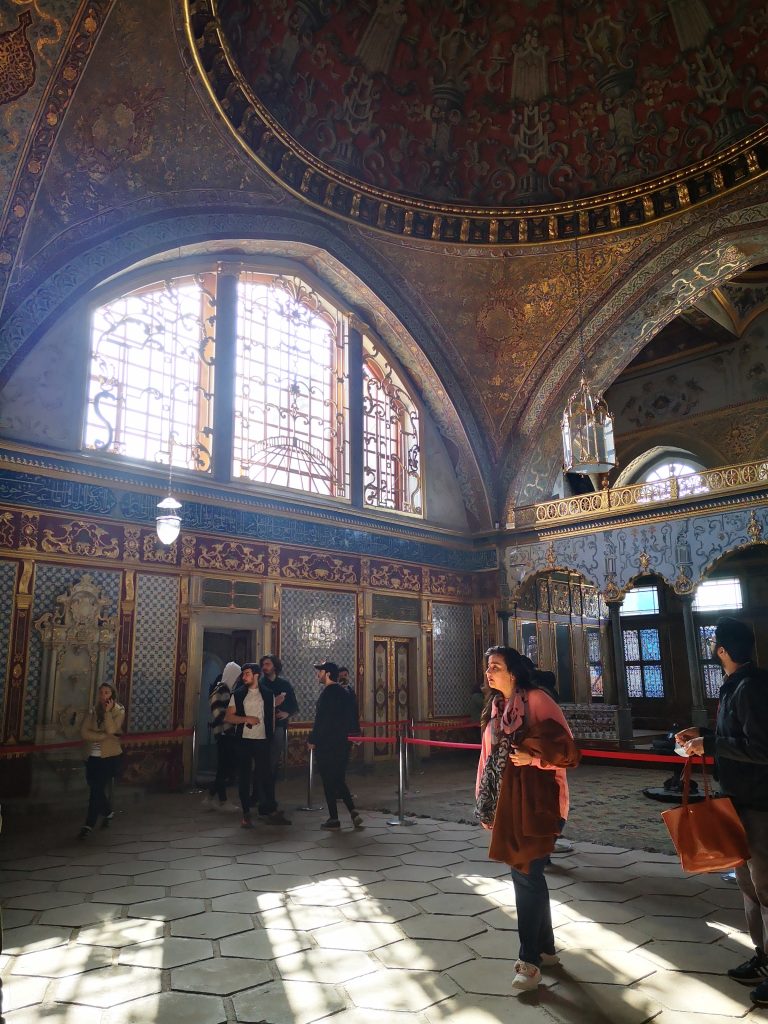We spent six nights in Istanbul and loved every moment of it – you feel like you are in the centre of the world and the diverse weave of people and cultures create a vibrant and pulsing energy. We digested a lot information to fuel our visit and our sightseeing, which we will relay some of in a moment, but first ‘Spot the Cat’.

Cats are everywhere in Istanbul, waiting to greet you at customs, keen to share a place at your dinner table or just catting in the sun – unlike in other cities though, these cats are cared for and loved, they are part of Istanbul and part of anyone that lives or passes through this city. A documentary, Kedi, explains this mutual love.
“Fall of Civilisations” podcast has been a firm favourite of Pippa’s for sometime, so to ready ourselves for Istanbul we tuned into episode 11, Byzantium – Last of the Romans on our journey. An excellent introduction to a diverse city steeped in history, that has been equally fascinating and mind-boggling to wrap our heads around. This city has been central to formations and destructions of religions and empires and is home to architectural marvels that encapsulate these periods in history. It is also home to a wide variety of nationalities, whether they were born here, moved in freely or without choice or to find refuge – Turkey, past and present is known as a shelter for many. However ancestry can vary from being a subject of pride to shame, with Turks themselves being the ones to confess to the latter often.
Istanbul, once named Constantinople, after Emperor Constantine, was the Roman Capital in the East, from 4th Century. Its strength has always been its strategical location; acting as a geographic bridge between Europe and Asia, and all the trade running between the two. Twenty three armies over 1000 years tried and failed to defeat the Byzantium Capital, thanks to its impenetrable walls. However the 24th army in 1453 led by the Ottoman ruler Sultan Mehmed II brought down the walls and with this conquered the city, changing its religion and place in history for evermore. The Rise of the Ottomans on Netflix is a worthwhile watch if interested.
To recount and summarise Istanbuls layered and complex history on this little travel blog would be a tall order. Instead we have written our short experience of modern day Istanbul, noting the key answers to the questions we had while strolling around this ever-evolving metropolis.
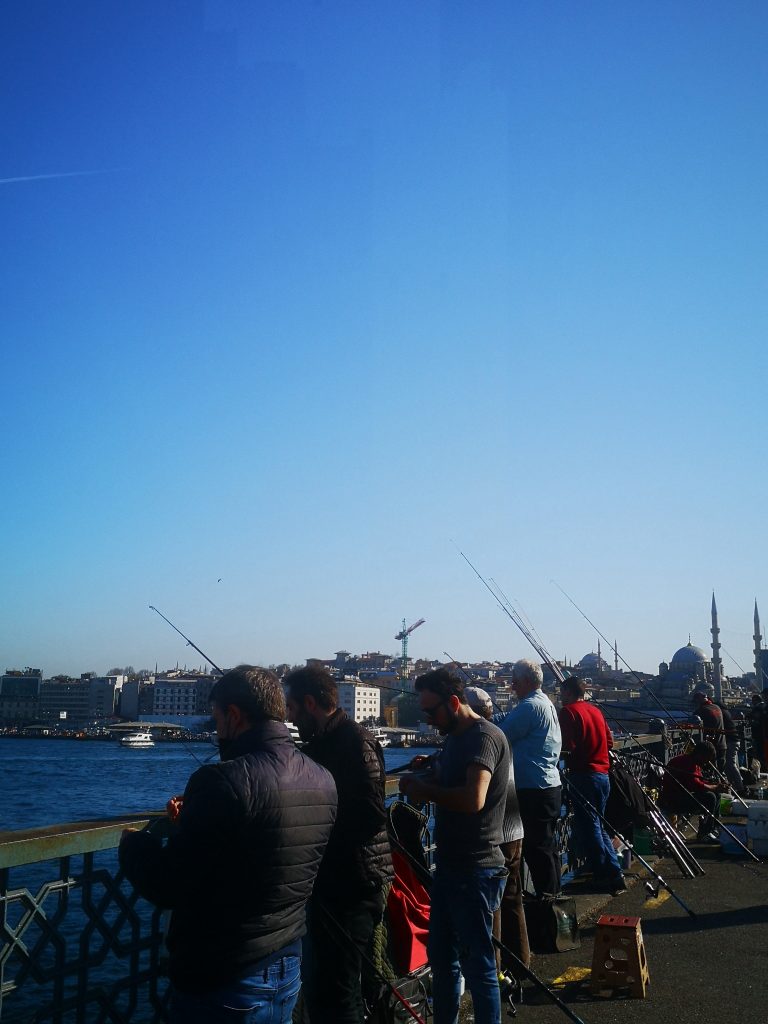
SIGHTSEEING
Hagia Sophia (Ayasofya)
Off we go on our first sightseeing day… A must-see of Byzantine architecture. Completed in 537 AD, the dome creates an impressive space today; just imagine when it was first built, nothing like it had been engineered at that scale, and nothing will surpass it for over 1000 years (St Peters Cathedral, Rome, 17th Century).
When Sultan Mehmet II took power in 1453 he converted the Church into a Mosque, as it is today, so we had to cover our heads. Thankfully a lovely lady helped us tie our headscarves correctly. Gazing up at the cluster of domes we could see the decorative remnants of the church it was built to be. The Byzantine angels and saints that have since been defaced, can still be imagined looking down on us from their golden surroundings. The columns and wall carvings in the grey granite were the most intricate we have seen, with a distinct Arab flavour.
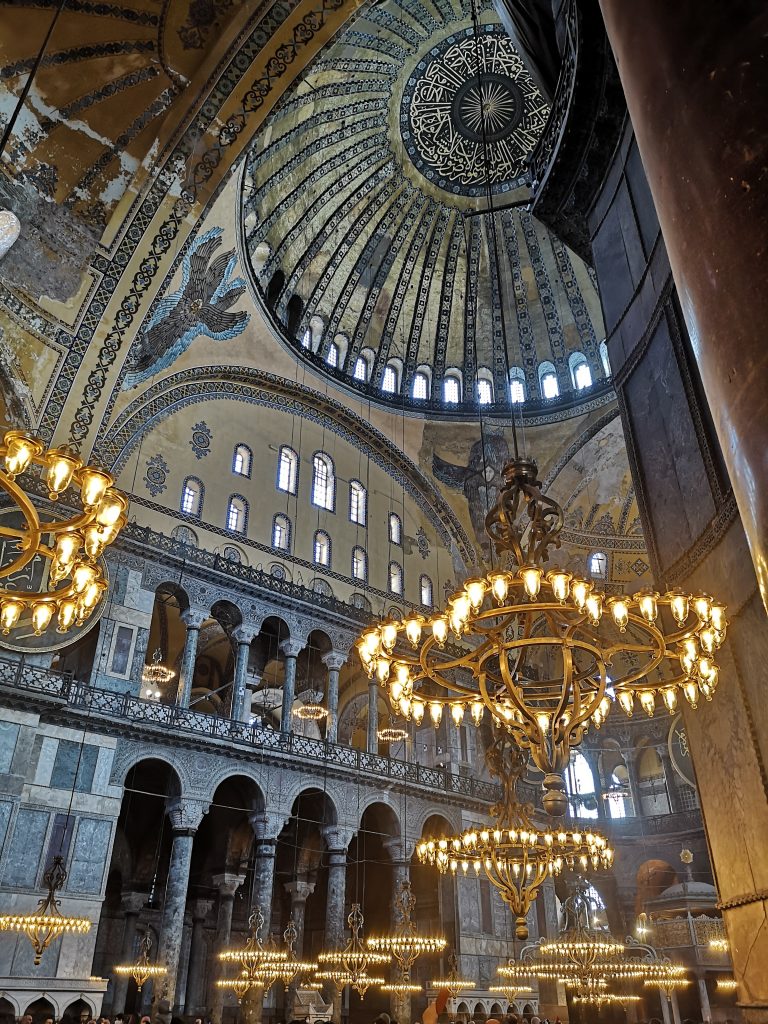
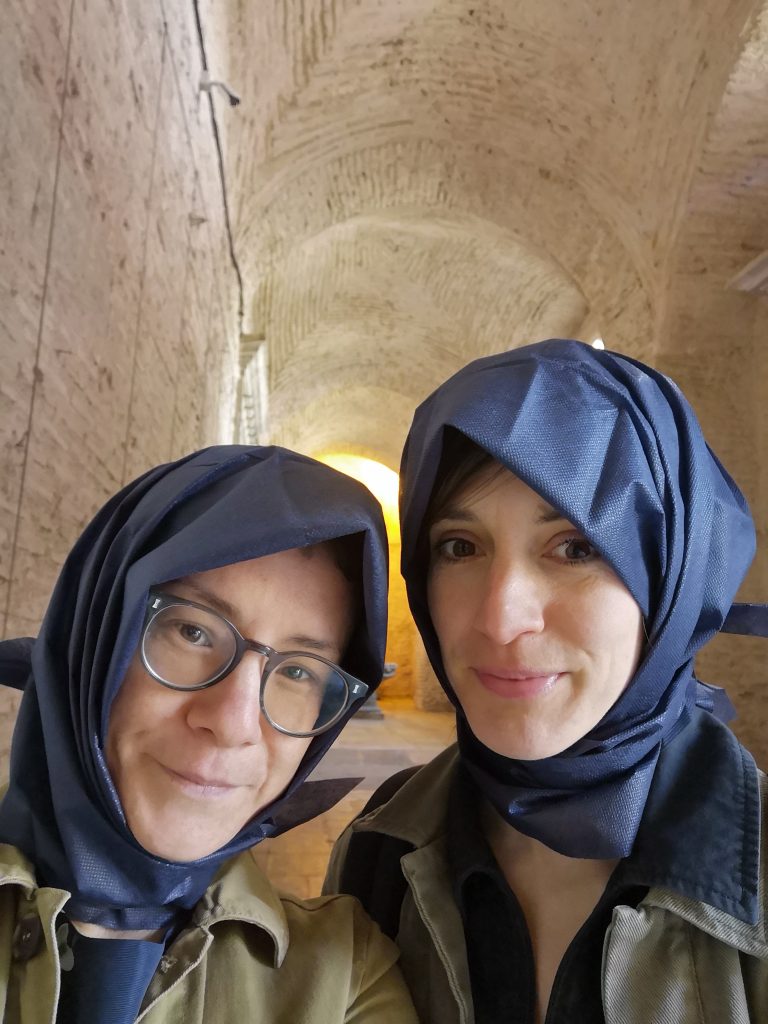
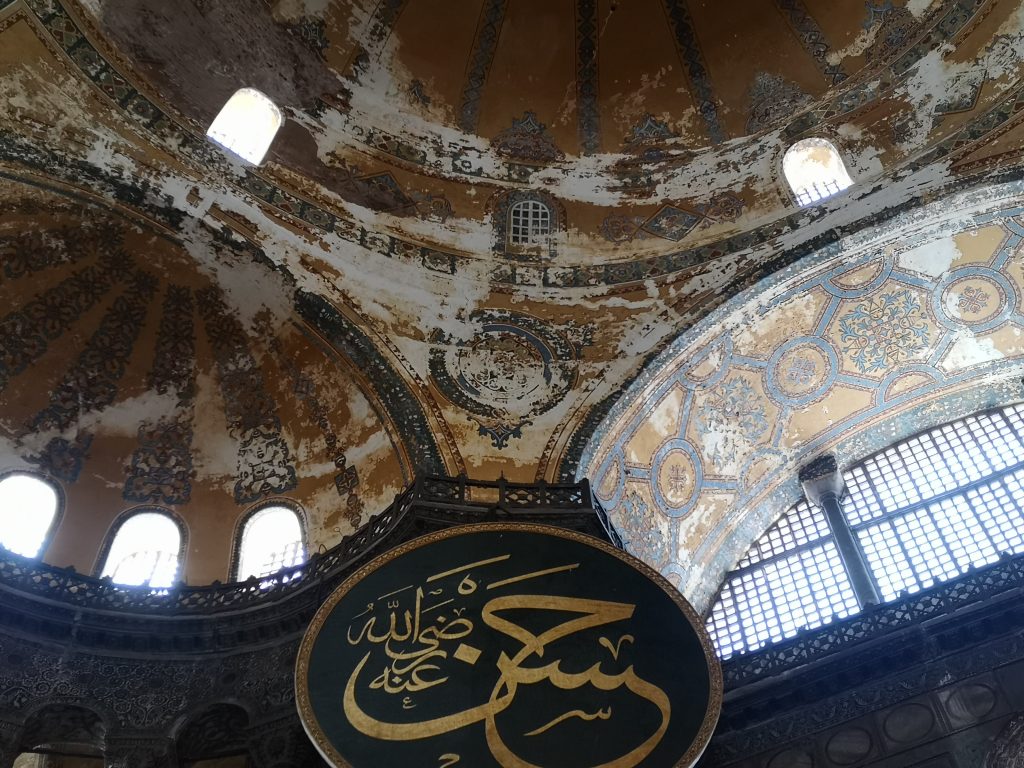
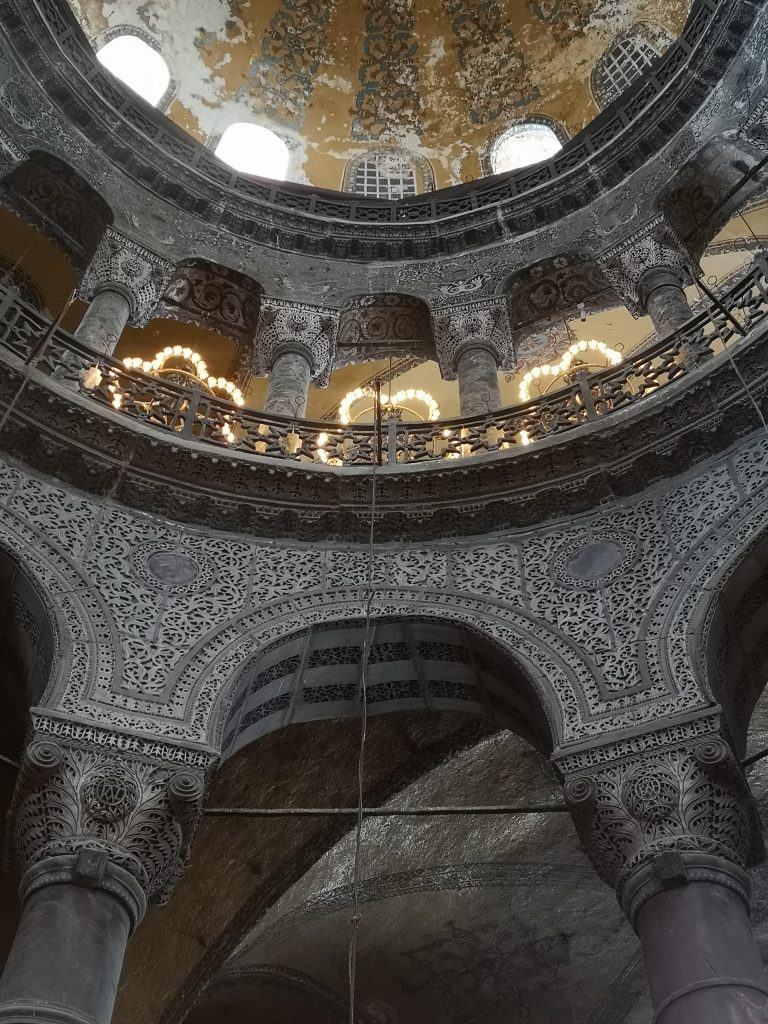
Looking out on Istanbul’s panorama, you would not be pushed to see a number of mosques dotted across the city. The design and layout of a mosque is based around a central dome, whereas a Christian church is planned around the cross. The influence Hagia Sofia had on future mosque designs is apparent all across the world.
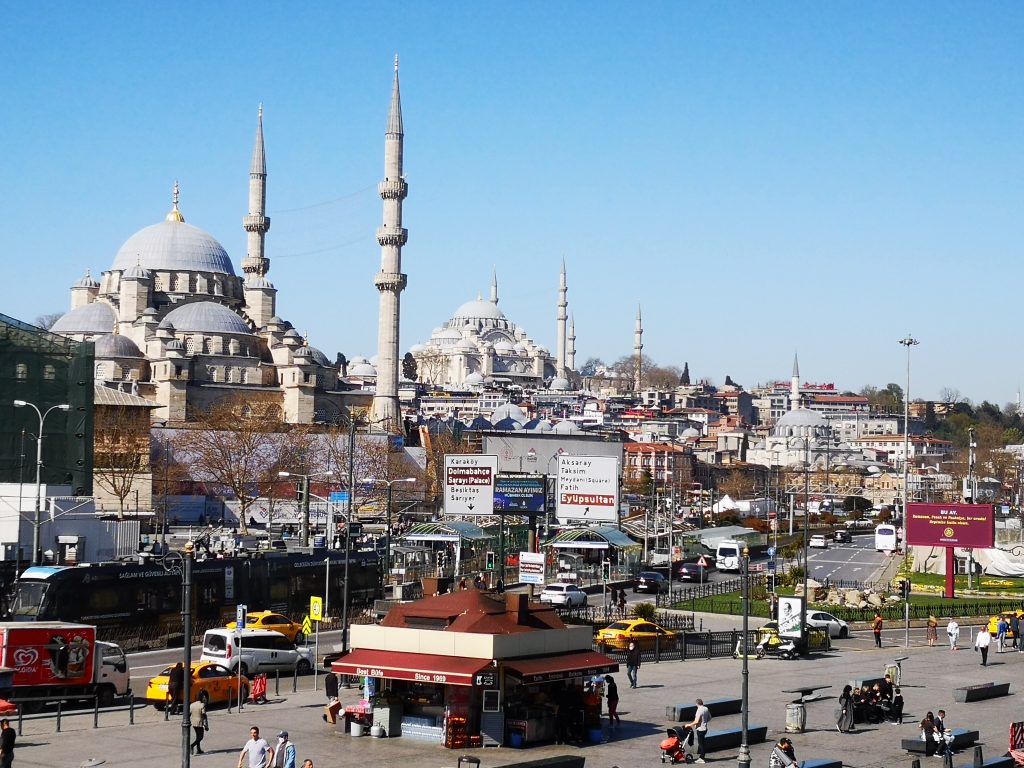
Topkapi Palace
Once the main residence of the sultans and officials of the Ottoman Empire (15th-20th Century), Topkapi Palace is an opulent feast for the eyes, as each sultan added layer upon layer of further decadence to leave their personal mark on this palace. Now a museum to their way of life, we wandered through the gardens and many rooms marvelling at the palaces’ intricacies and taking in the varied lifestyles that took place on these grounds. The dazzling beauty of the rooms can not mask the scenes of brutality and dark twisted plots they witnessed.
The Janissaries, were an elite military unit levied from the children of the Christian Balkan countries the Ottoman Empire ruled. The stolen children were trained and educated at the palace and when trained, and not fighting, were dispatched to rule Balkan states, with the idea that there would be no threat to the Ottoman’s power if a foreigner and orphan governed a country on their behalf. This system continued until 19th century but was abolished rather abruptly by the ‘Auspicious Incident’ in which 6,000 were executed.
The eunuchs were the trusted ears and eyes of their sultans – these slaves were deemed to be less threatening to authority due their castration, so if their council is particularly trusted they could end up wielding much power over the Empire.
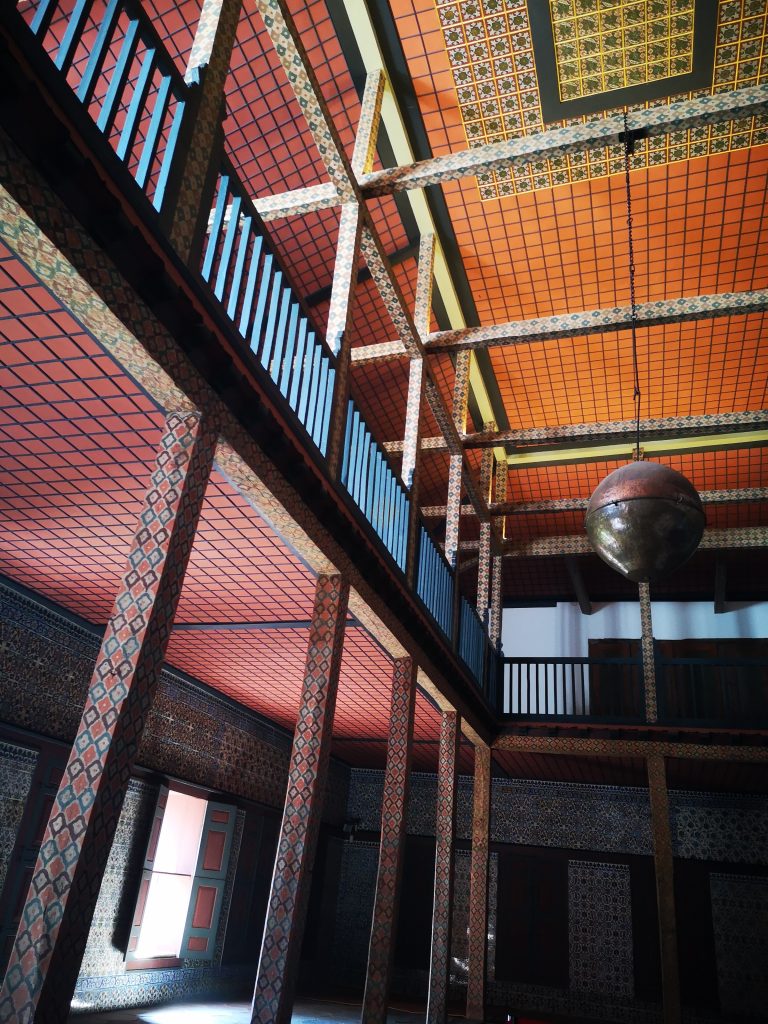
The top woman in the palace was the Sultan’s mother, and often the sitting Valide Sultan could end up running the show/Empire from behind the Sultan and would be very particular about who would rise to the throne. She would even reside over which concubines were proffered to her son, so that suitable breeding was established, with the aim of producing as many potential heirs as possible. Favoured or eldest heirs though might find their early lives limited; due to being killed by a jealous sibling, paranoid sultan or even controlling mother, or they could be thrown into the Kafes (cage) to ensure that any murder plot is hindered. There was an actual concern that due to the frequency of killing heirs that the Ottoman dynasty would die, so the gilded cage became their security, in which the young boy would be imprisoned ‘compassionately’, patiently waiting his turn on that throne…..
“All goods and evils are coming from the mother queen.”
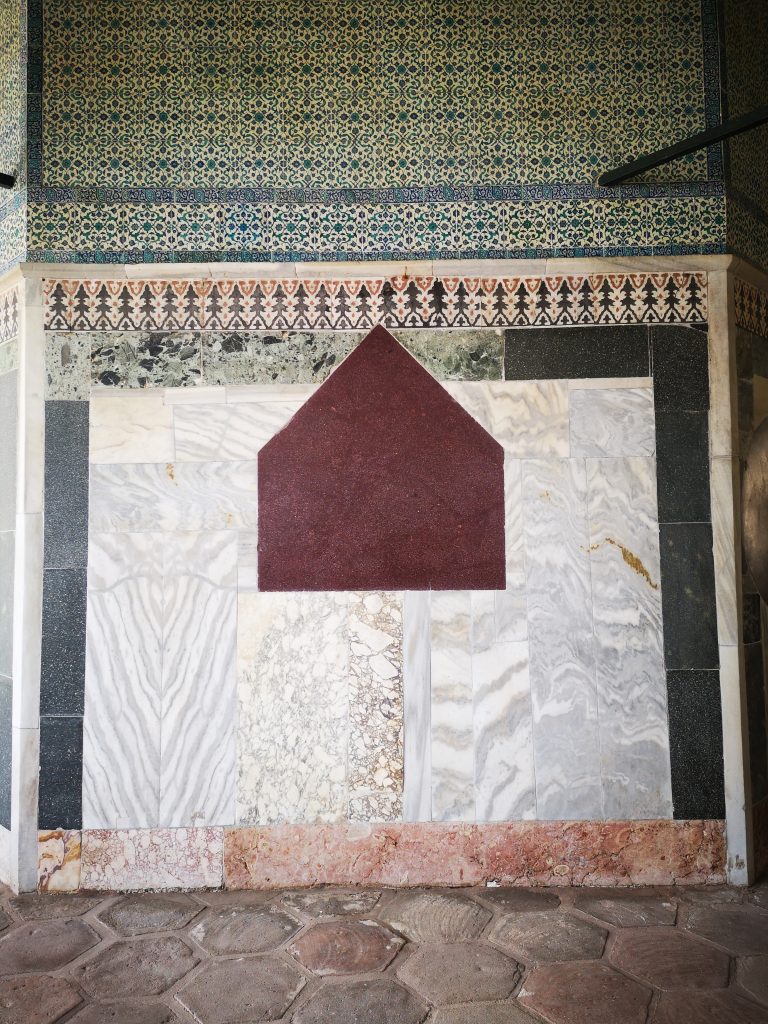
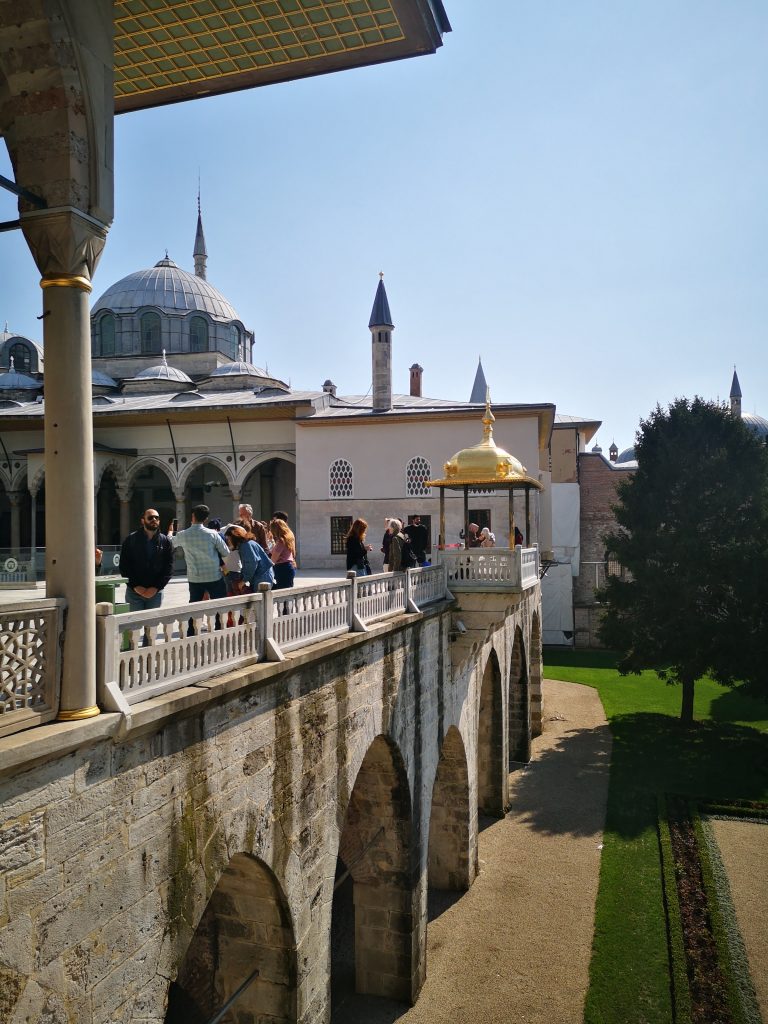
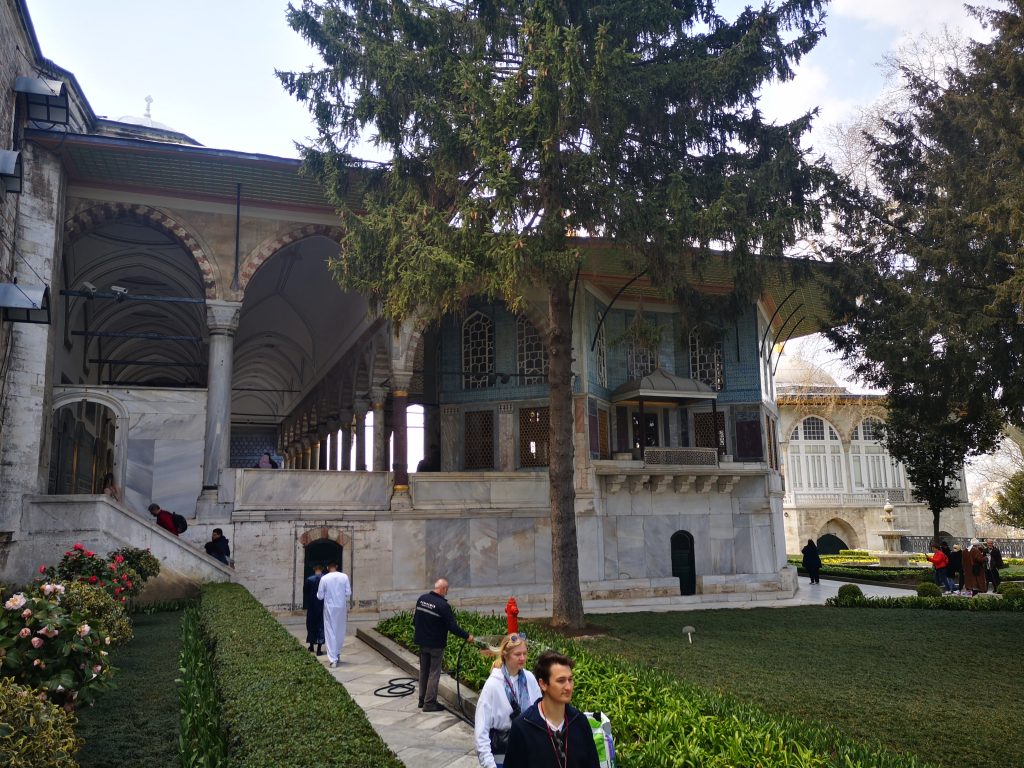
Cafe Culture
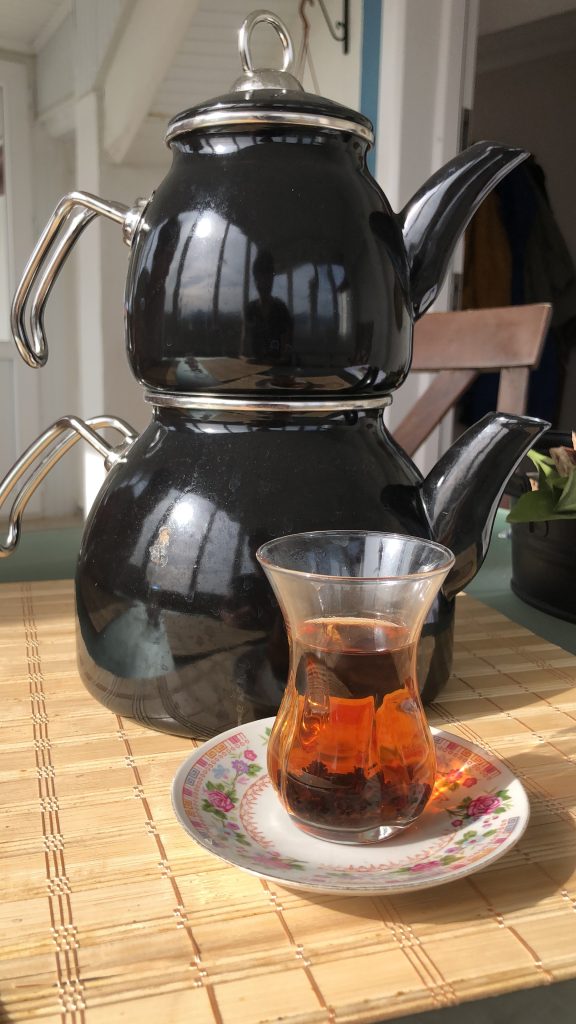
Çay is a way of life, they drink tea all day long in small tulip glasses – weak, no milk. Cooked in a doubledecker teakettle it is brewed strong in the top half and then topped up with hot water from the bottom.
Turkish coffee is also on hand for more zing zing – authentically, and ideally, brewed over charcoal, it takes 7 minutes to craft. It must never boil and the foam created must be salvaged and gentled spooned first into the cup, then the coffee granules suspended in the liquid are poured in one long stream without breaking the newly formed foam on top. The coffee once settled is 50% solid coffee granules and then thick strong liquid. Once drunk, upturn it and the beholder is free to read whatever fate they dare to see….
With a distinct lack of alcohol in Istanbul it is the coffee shops that throng in the evenings, which at the weekends can lead to some boisterous activities fuelled by caffeine.
FOOD
Needless to say we ate exceptionally well in Istanbul and perhaps got overexcited at times. We were quick to notice that eating styles varied between us and the Turks; we did our best to adopt how the Turkish eat. Food arrives, an air of disinterest settles, perhaps a cigarette lit, then some languishing, çay or raki is then drunk, perhaps a nibble and then repeat. Despite efforts we would always be the last to sit down, and first to leave – how they eat is a truly admirable skill. It is all about being social, even if eating solo, the diner is there for the atmosphere, the company and general conversation – we have much to learn from them.
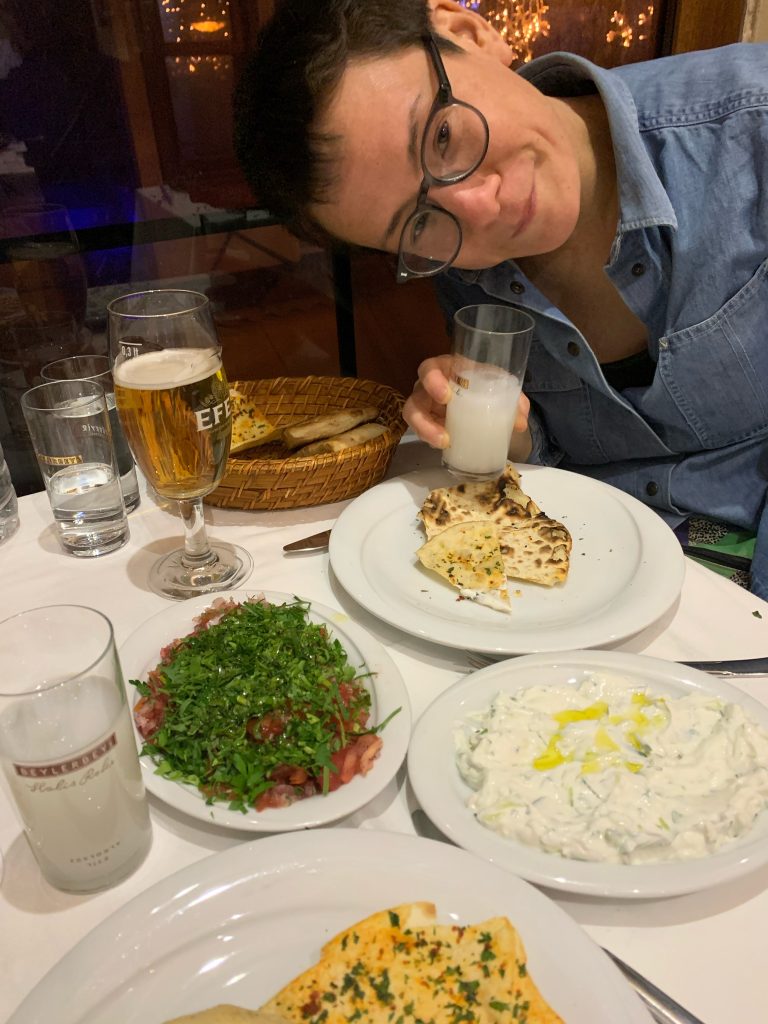
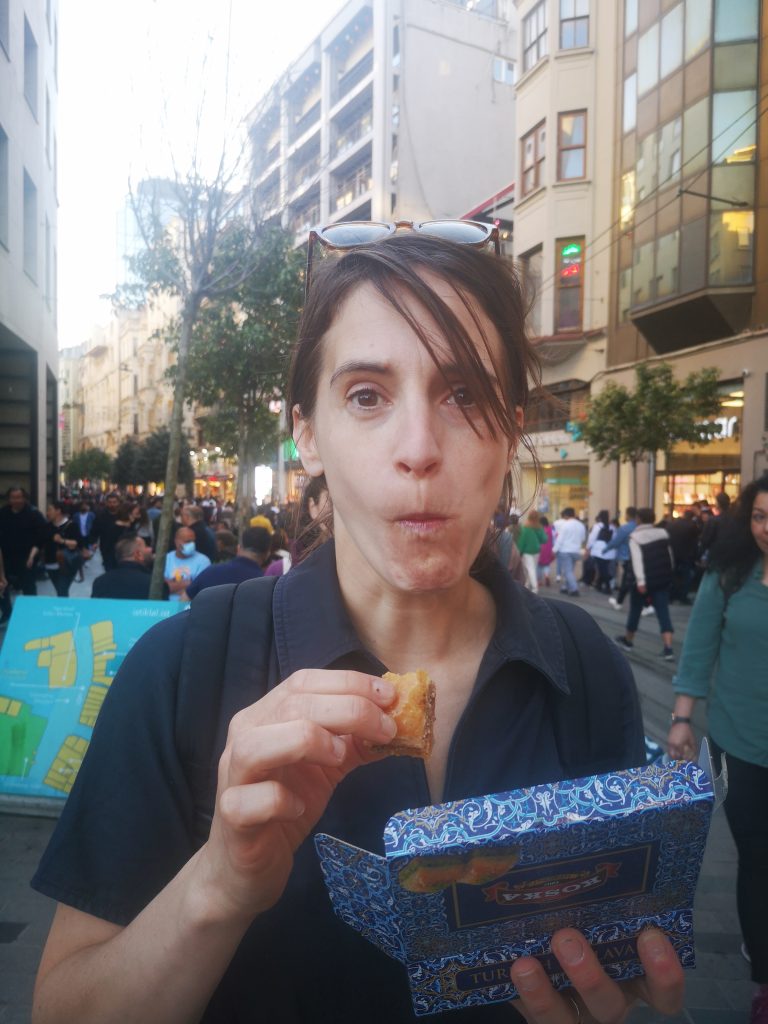
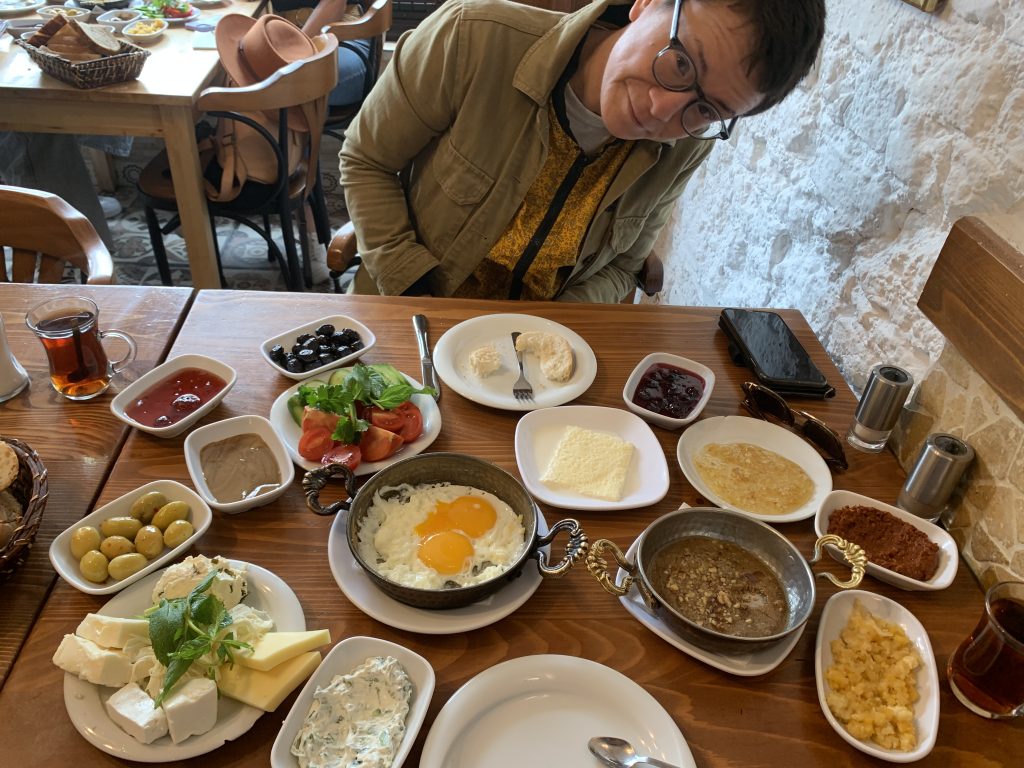
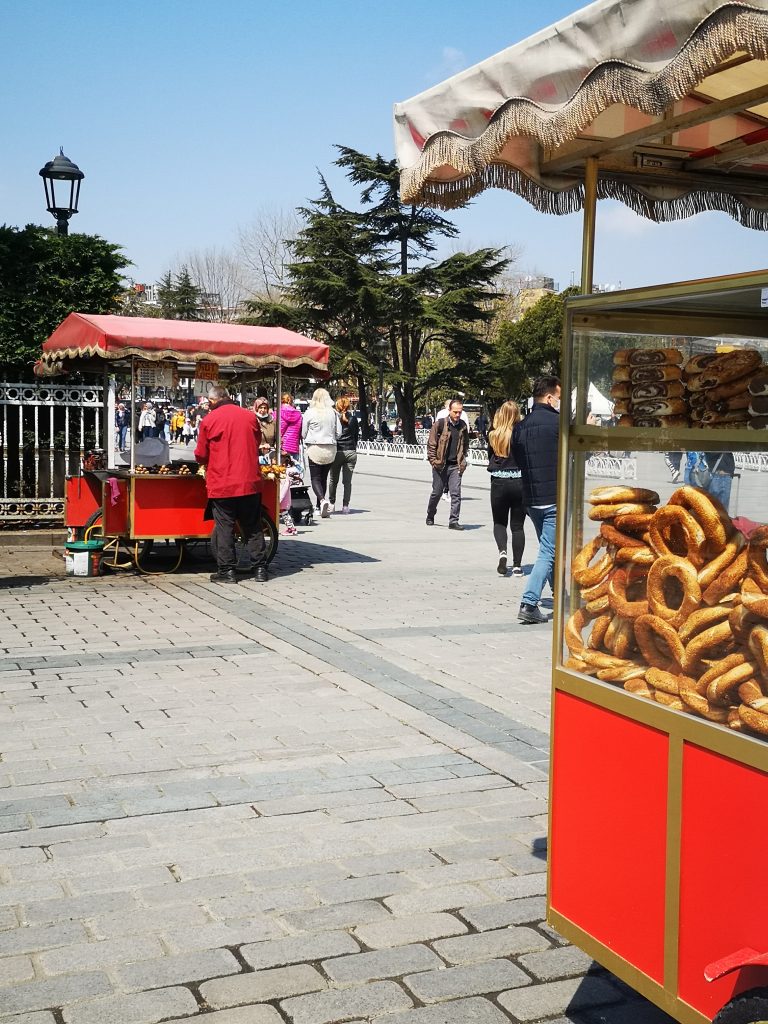
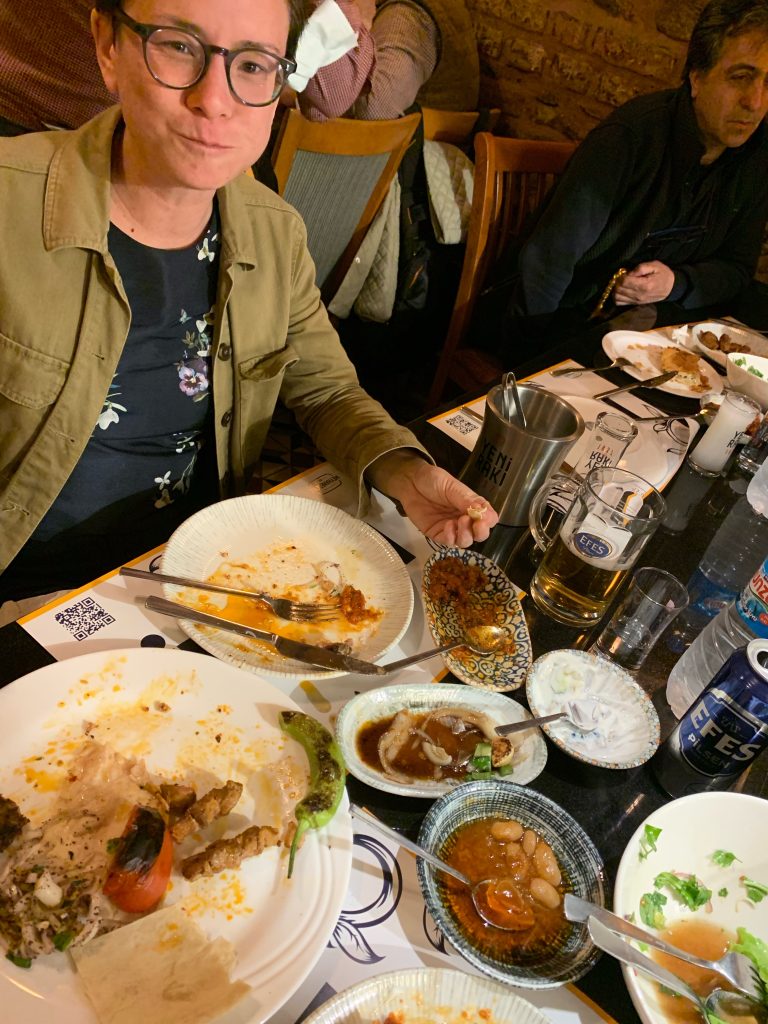
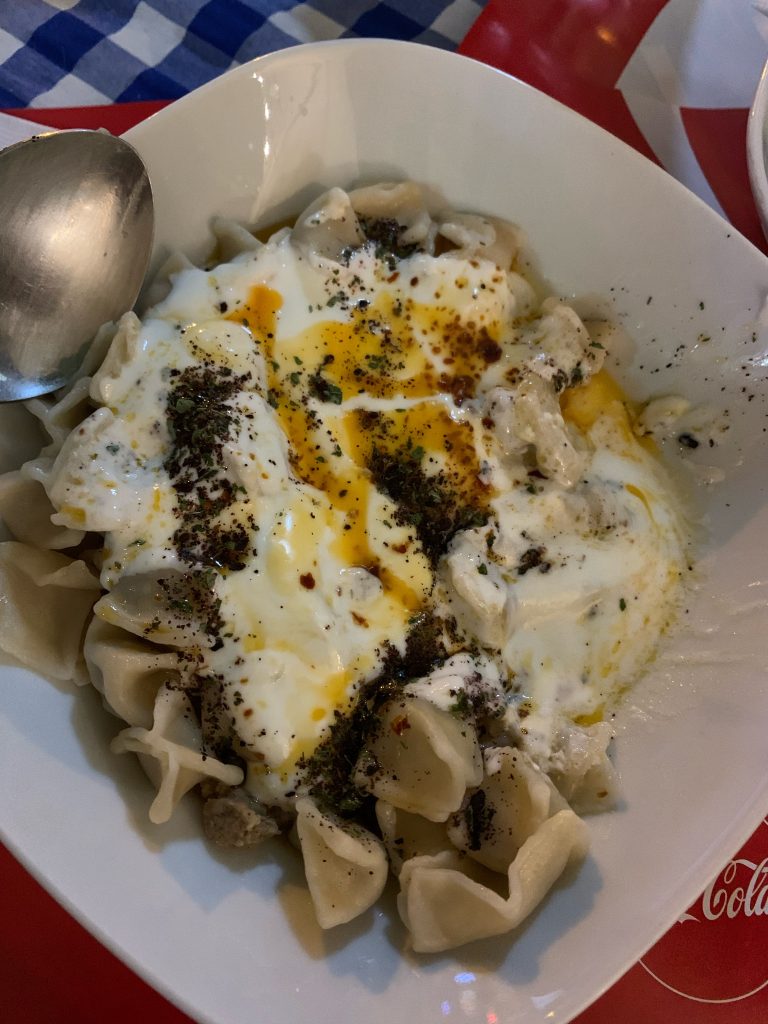
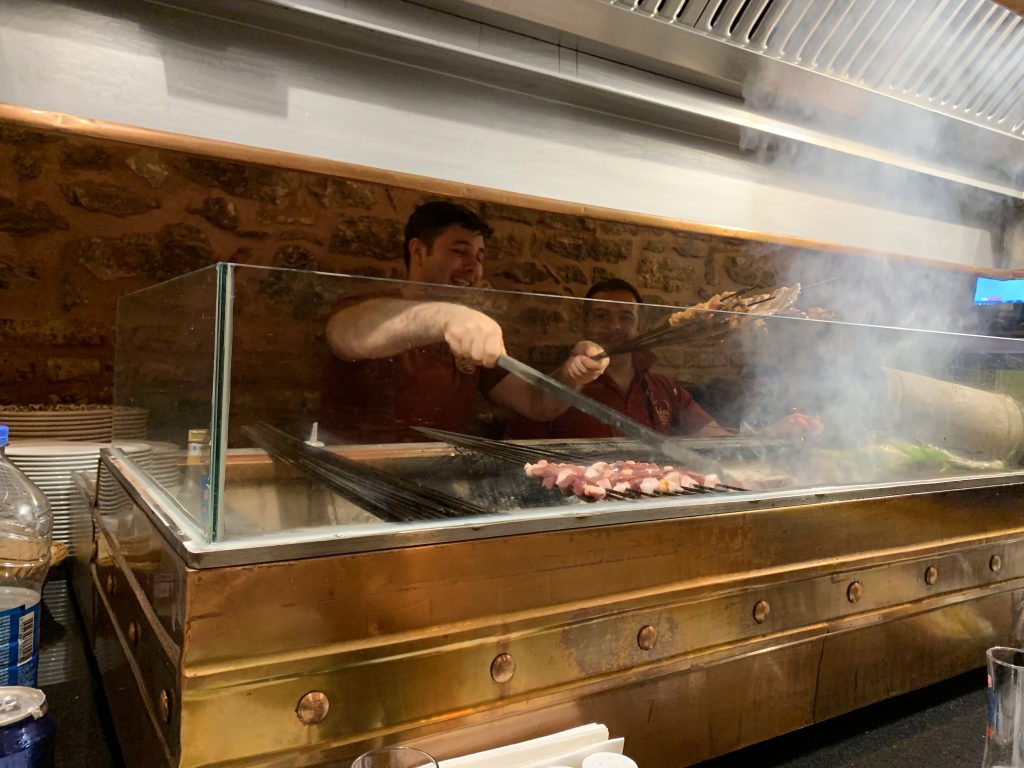
A place that deserves its own shoutout is Çiya, which is on the bustling Asian side – this has been the most interesting, varied and delicious food we have had for sure, in Istanbul or anywhere. Musa Dagdeviren the chef is described as a food anthropologist and he uses his platform to teach and keep regional Turkish cooking alive and as a way to unite all, in a more culturally divided Turkey than his youth. Çiya is a must go if you are in Istanbul, otherwise two ways to digest Musa’s talents are his 500 page book – The Turkish Cookbook – or Chef’s Table (episode 2, series 5, Netflix).
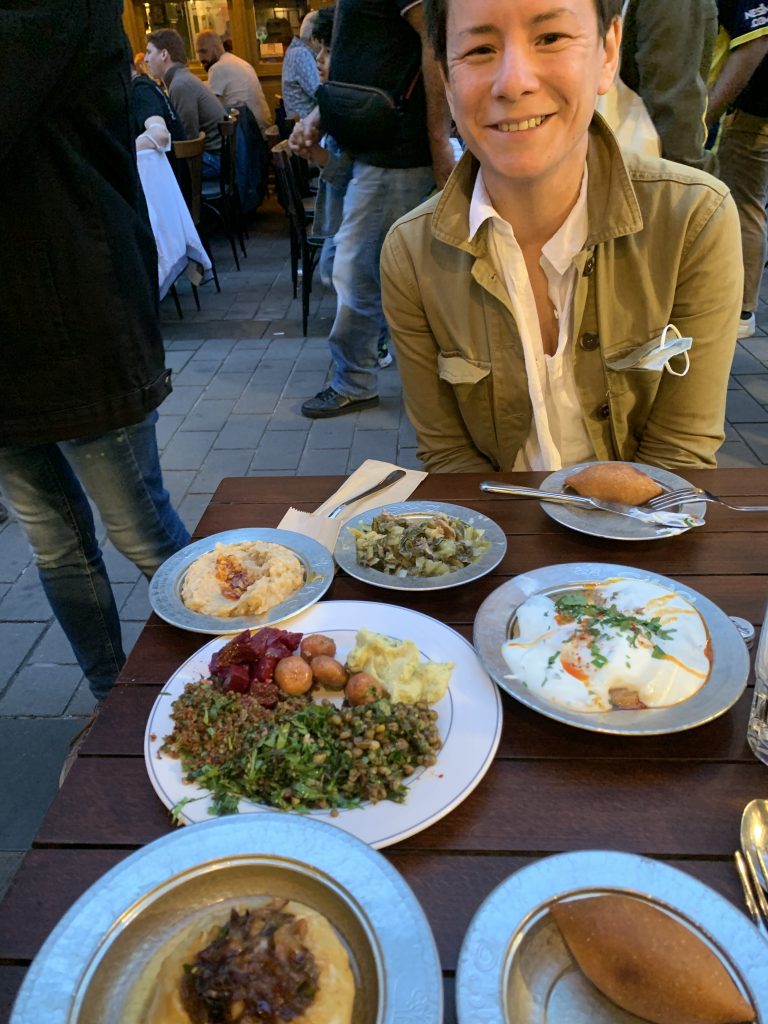
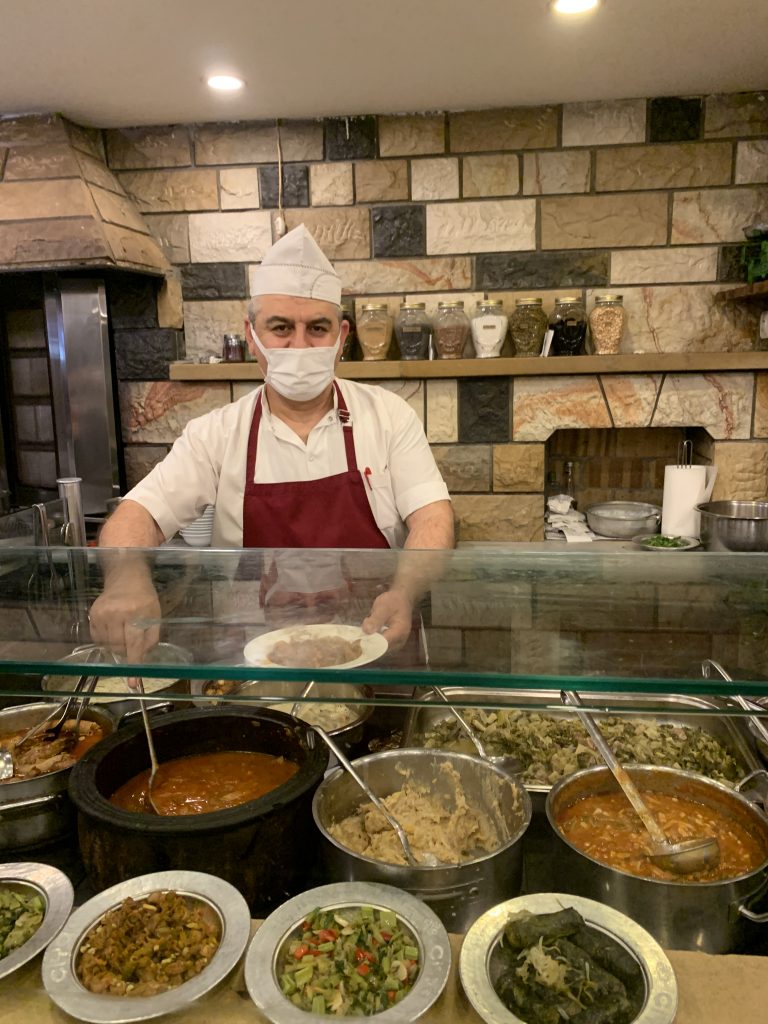
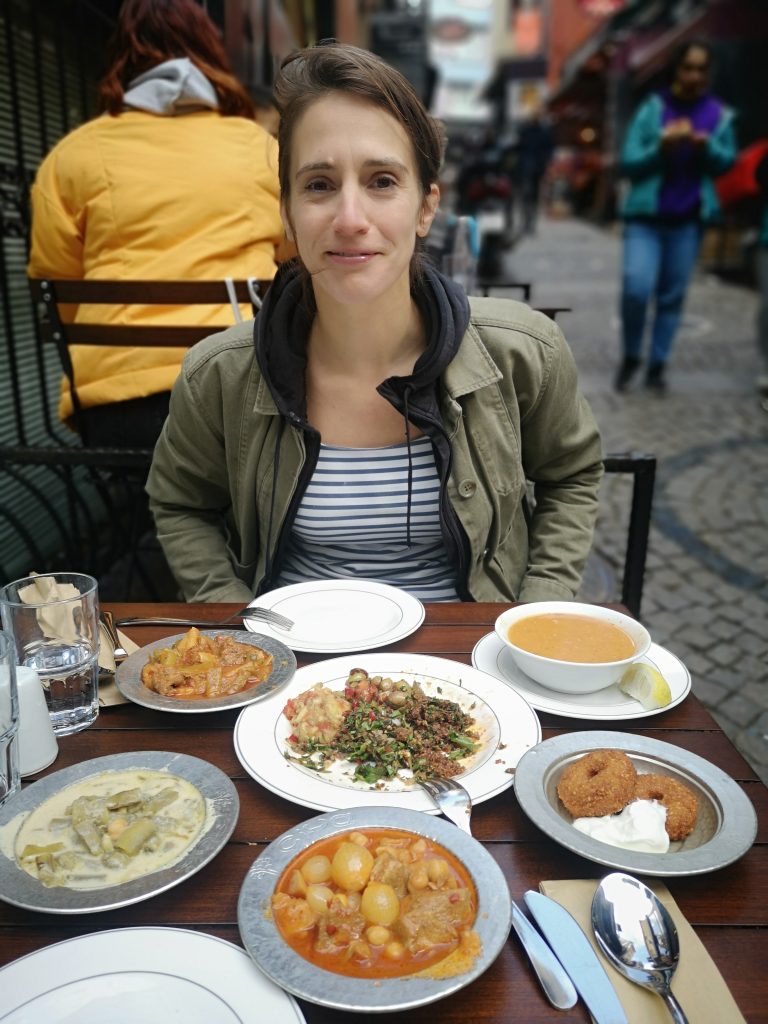
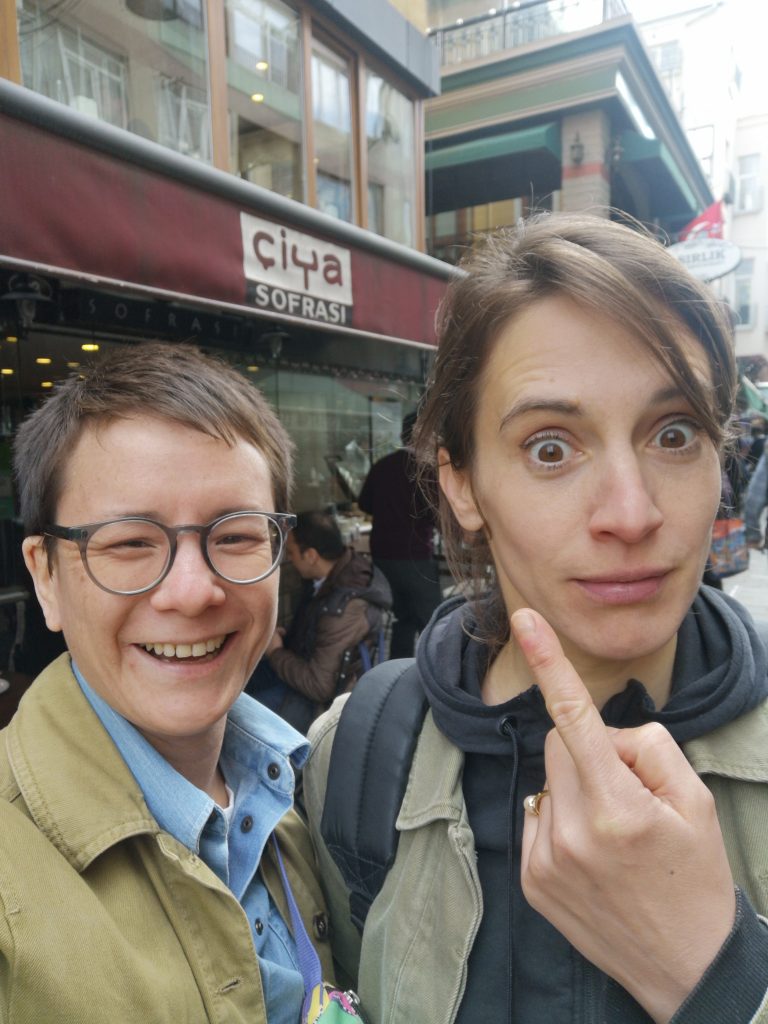
We went there twice.
Ana often dreams about it.
We will be getting the book.
And returning.
MUSIC
Pippa first appreciated Turkish music when she discovered Islandman – she bought us tickets for them in London for May 2020, but frustratingly that was postponed to May 2022 – we are gutted to miss them. Anyway we knew there were good sounds out there so we kept our ears pricked. It wasn’t hard to find:
Though not Turkish we went to a gig Parra For Cuva, a German DJ. This was held at Zorlu PSM, a vast contemporary music complex, think Barbican meets Westfield. We wanted to dance (#dancemore) and we wanted to meet some Istanbulites.
We didn’t meet any Istanbulites, but the gig was intimate and awesome.
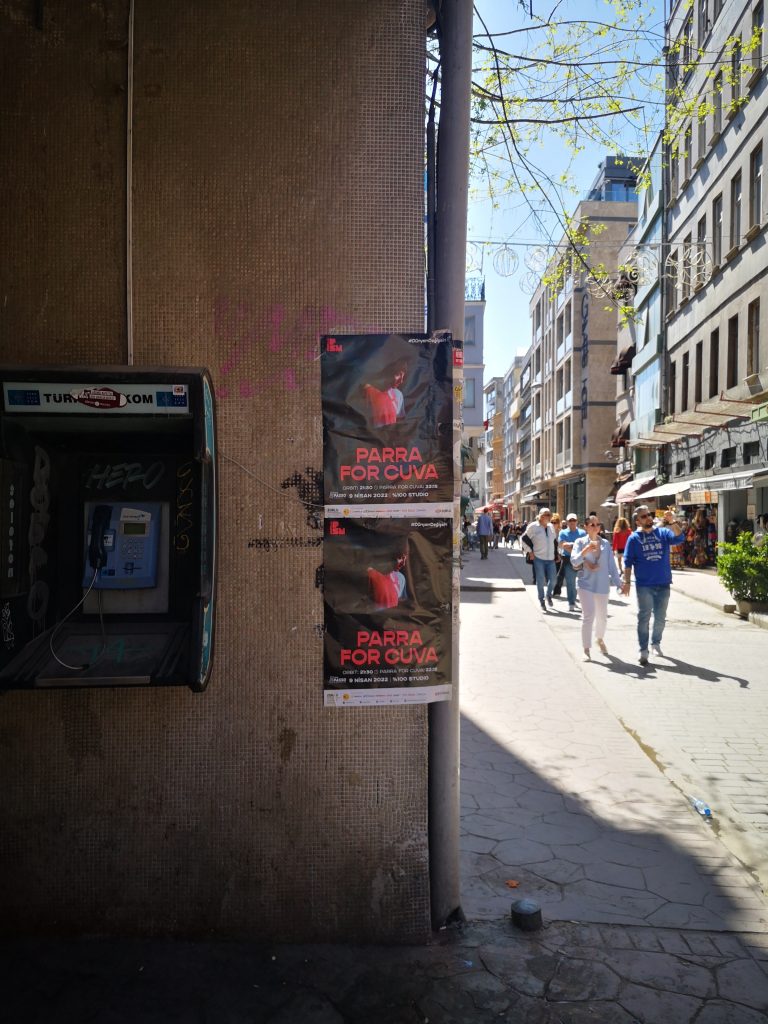
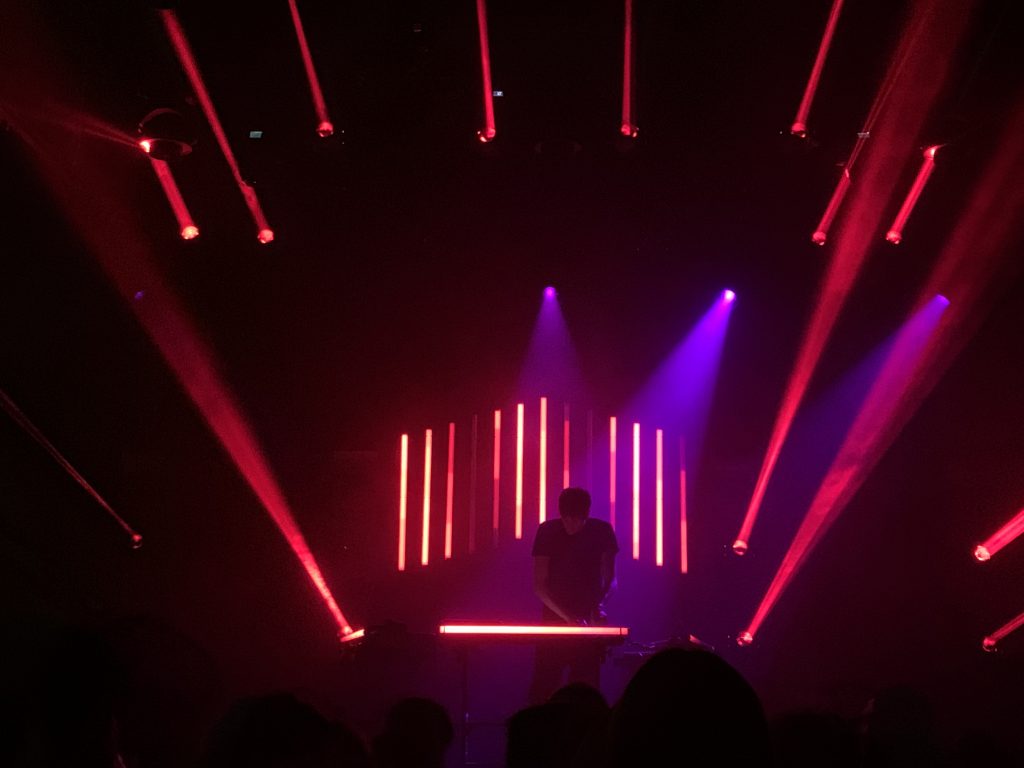
However, we did meet some Russians after the gig – Alex and Robin. They were a married couple, both 25 years old, who had fled Moscow to avoid consignment and a regime they couldn’t abide by – leaving their studies, home, family and cats; their lives. Unsure of where their new home will be, they were pitstopping with a friend in Istanbul. It was insightful to share some time with them – they were hopeful, resilient, angry and sad. They said that all the youth, intellectuals and creatives (or at least the ones that could) had left Russia, as they had. They confirmed much of what we had heard from the UK about Putin and his manipulations, the elders have grown up with it – they were not hopeful of him being stopped or overthrown. We’ve kept in touch with Alex and Robin and perhaps our path will go through their new home when they find it – there were talks of Berlin or London. We voted for Berlin.
LEISURE TIME
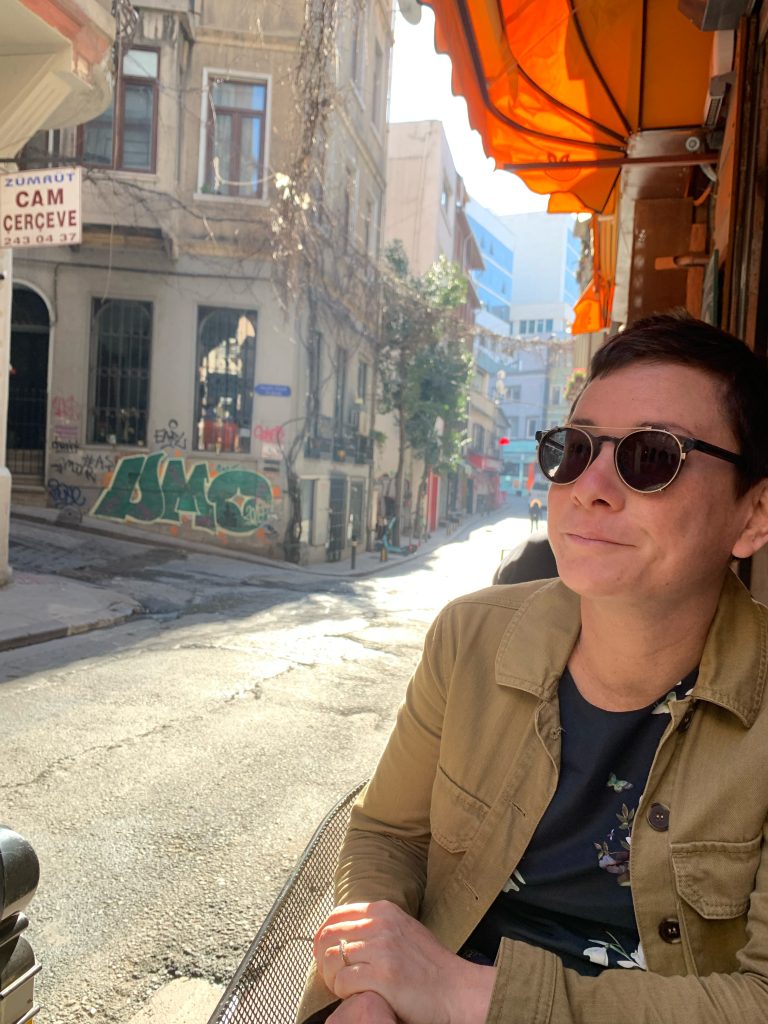
As wandering, getting lost and sitting down is the best way to enjoy any city, we made sure to do much of that.
The Bastard of Istanbul by Elif Shafak was the perfect accompaniment to Istanbul – a story of connected ethnic families unsure whether to look forward or backwards – an issue that Turkey itself has.
A Day on The Bosporus
The Bosporus is a narrow strait that divides Europe from Asia, in Turkey this means Thrace from Anatolia, and it flows from the Black Sea into the Marmaris Sea which flows out to the Aegean Sea. This international trade route is significant, especially for the countries that line the black sea, it also makes for a wonderful day trip out of the city, pootling along on a boat. As the city falls away, lush green hills rise and you will find Yalis (Ottoman summer houses/mansions) peppering the banks. Providing perfect window shopping and much googling (most expensive Yali is £100million), whets the appetite for a fish lunch where the Bosporus opens to the Black Sea and then a speedier trundle back to the city in time for sundowners. A thoroughly lovely day on The Bosphorus.
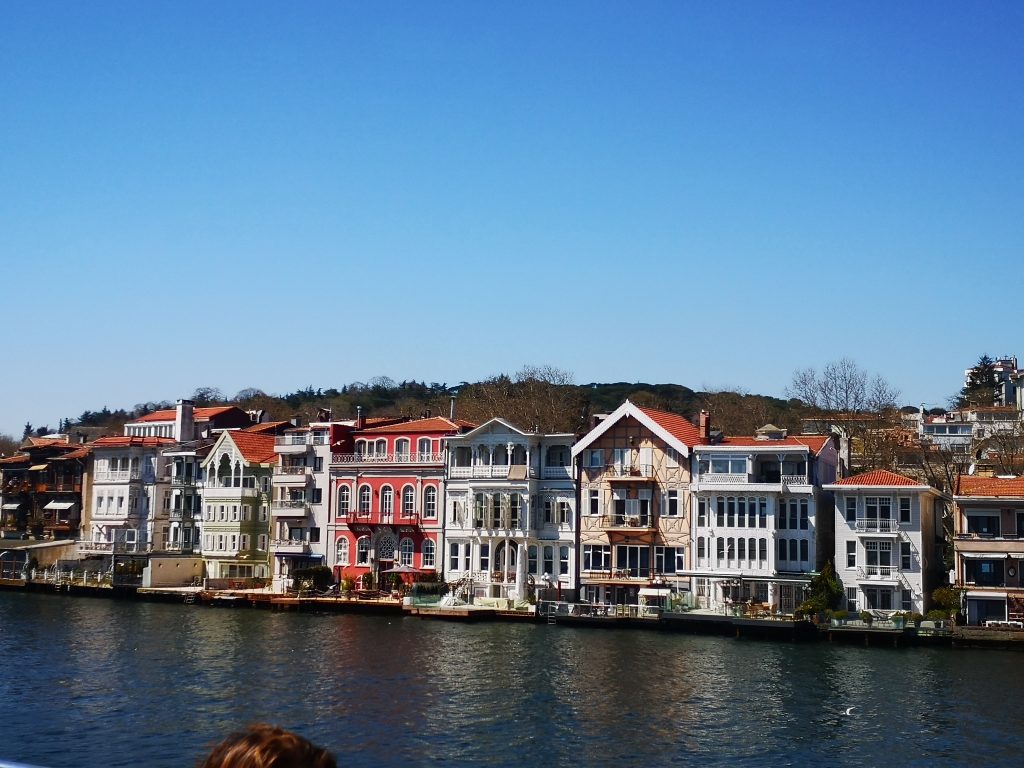
Hamam Life
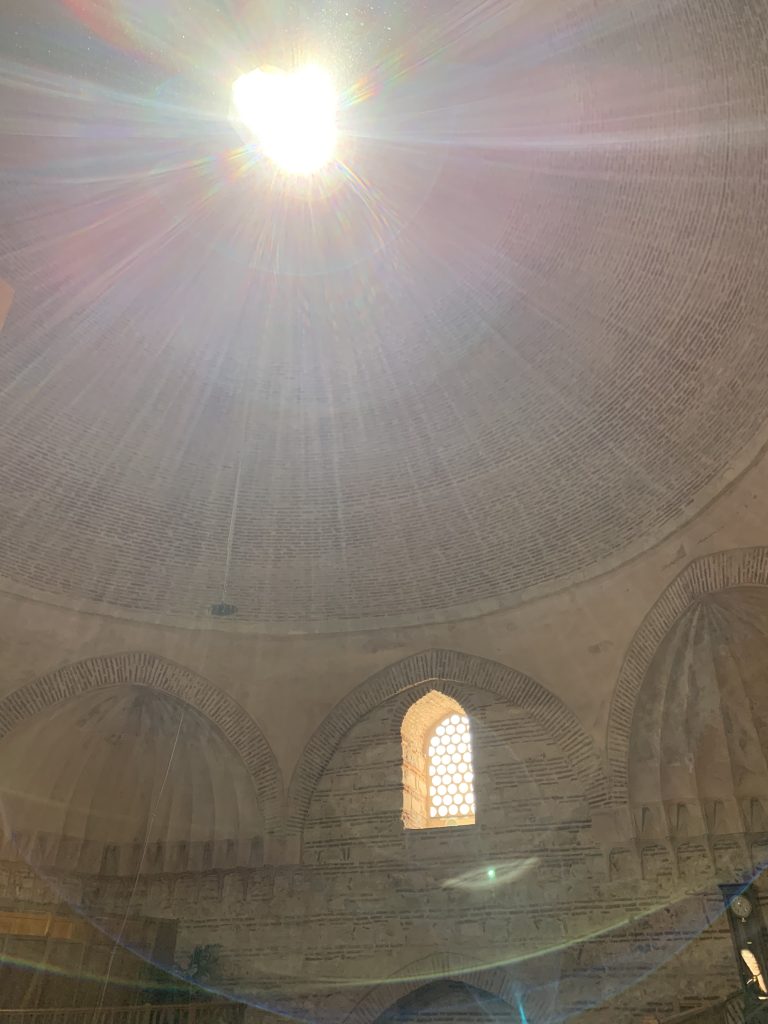
Sunday morning led us to an old authentic hamam (quite a chic one) where surrounded by hot marble surfaces we were submerged in pillows of suds, scrubbed and washed. Lovely. No pictures were allowed, but this sneaky one as we left, sets the tone.
Shopping at The Grand Bazaar
Advisable more as an experience than a practical shopping excursion – this maze of 4,000 market stalls sell everything from antique watches to kilims to brass taps – all with a hefty tourist inflated price tag. Built at the start of the Ottoman’s reign, it has seen a couple of fires so has been rebuilt, but there is some authentic 1461 remnants in the old part. Worth an hour or so, it is a discombobulating yet hypnotic experience as you weave you way through the numerous sellers and hagglers, hopefully out to the other side….
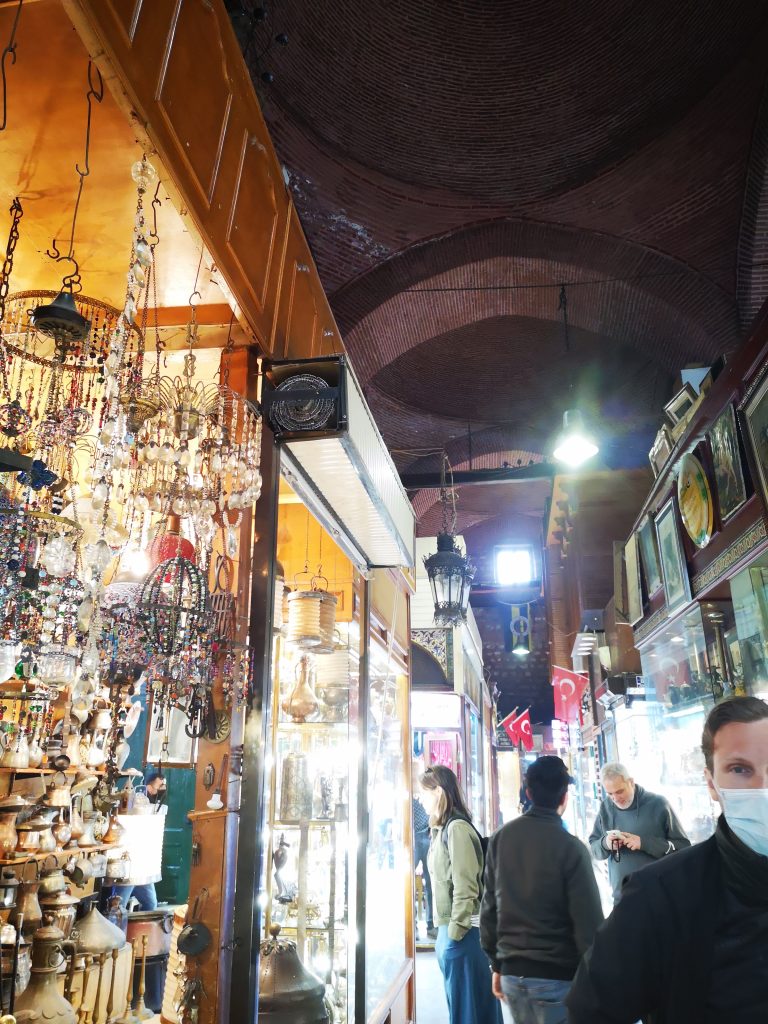
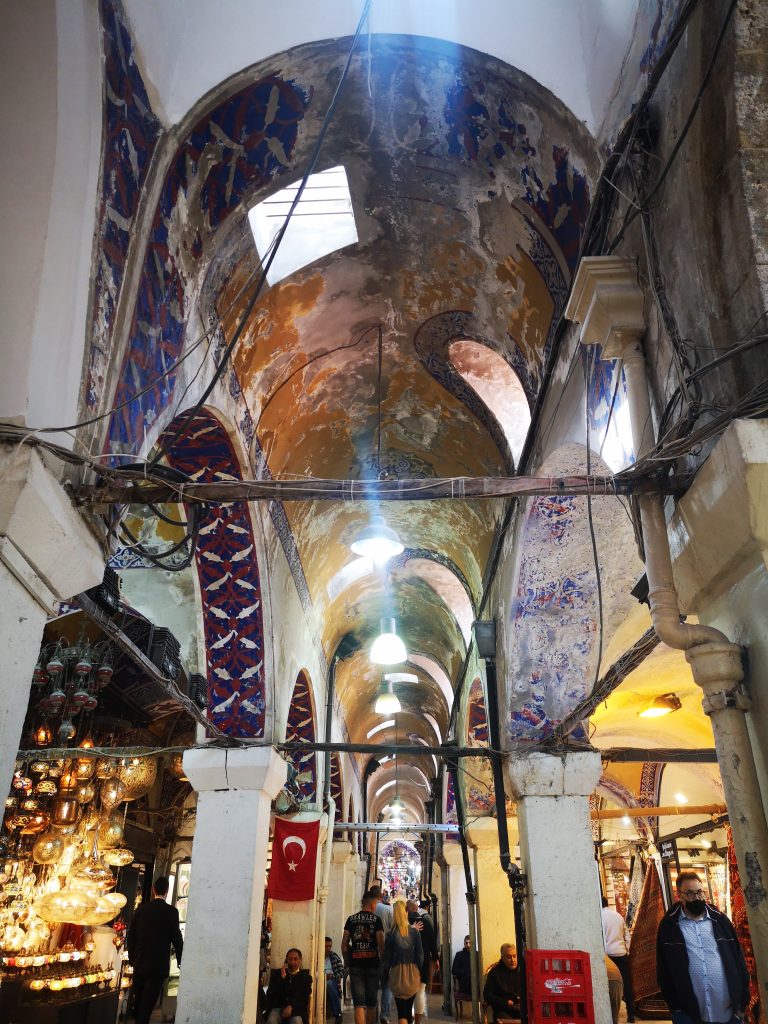
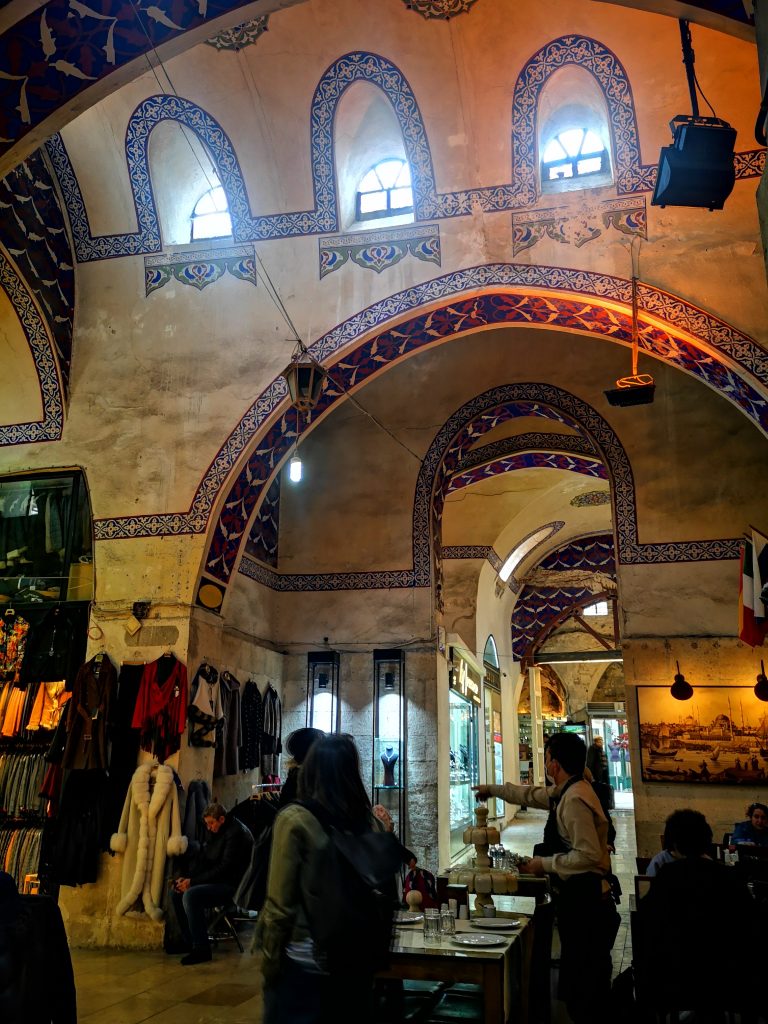
Smoking……
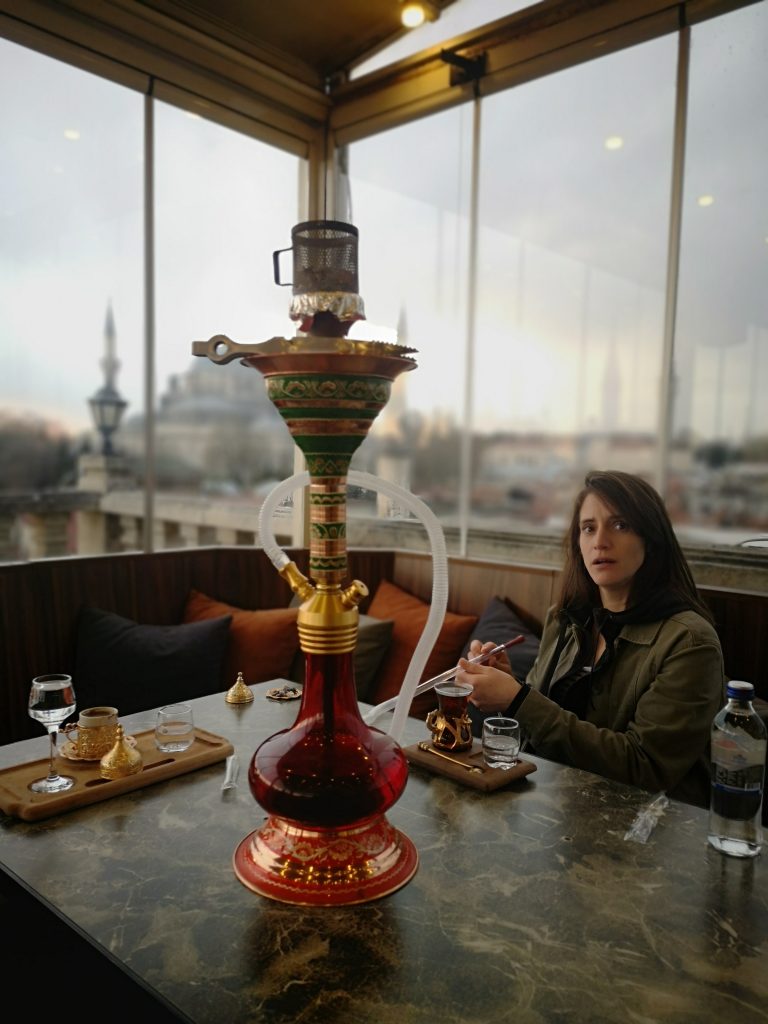
To while away a few hours before catching a night bus, we enjoyed an never-ending shisha pipe and some spectacular views as the sun set on Istanbul for us one last time.
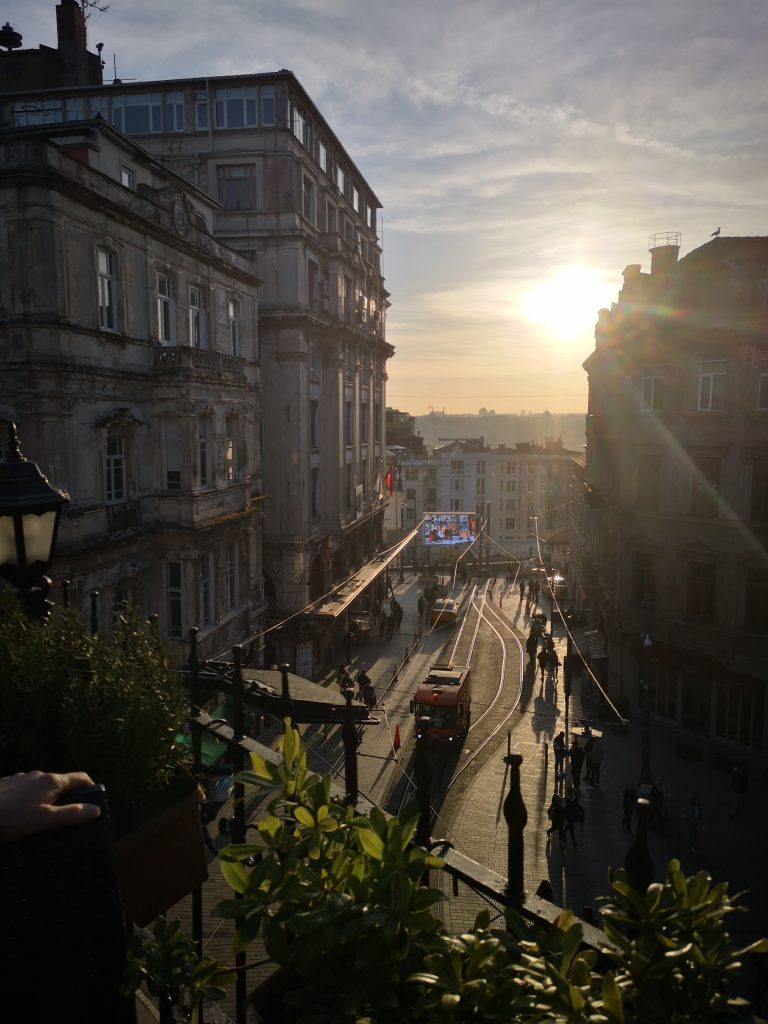
BYE BYE ISTANBUL…. WE WILL COME AGAIN.

